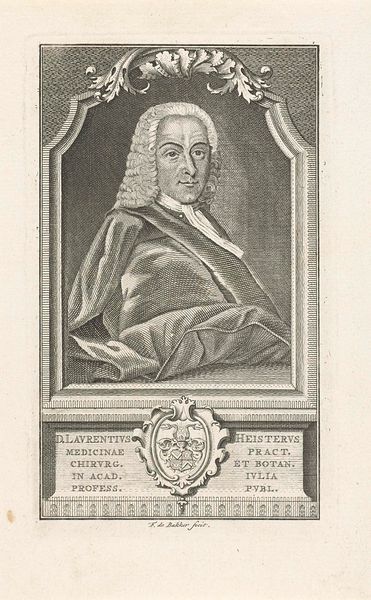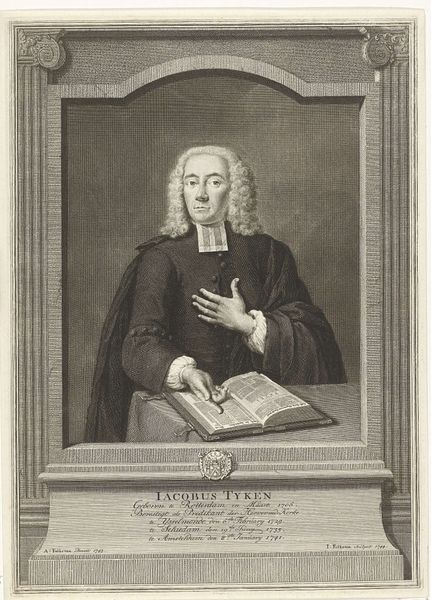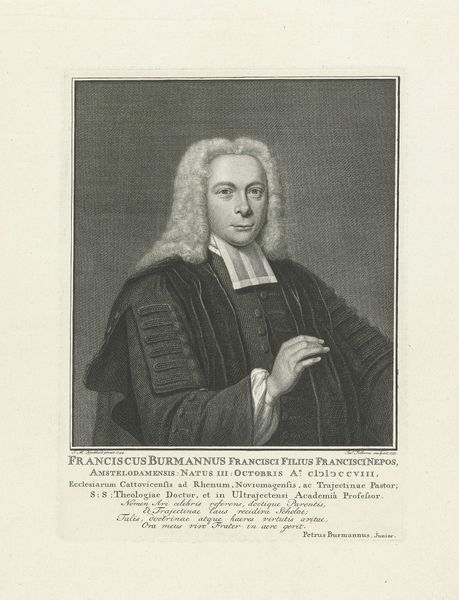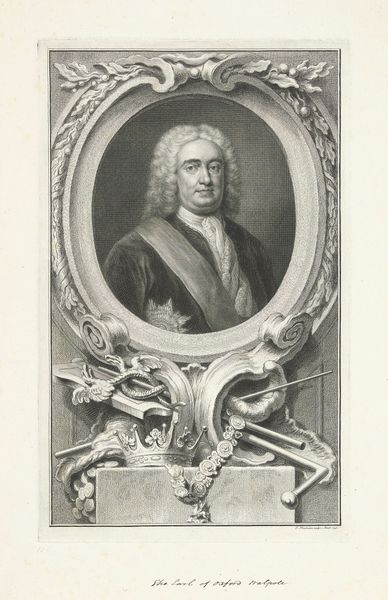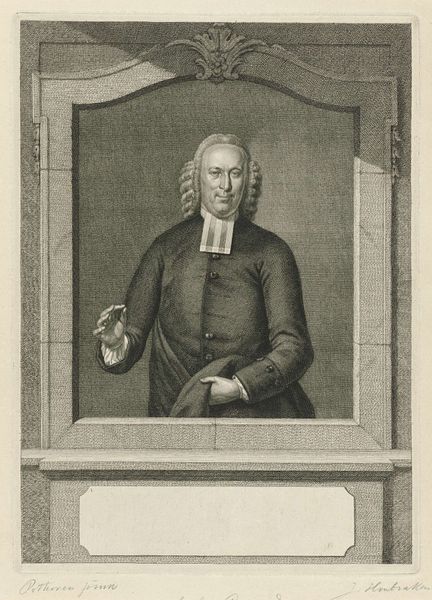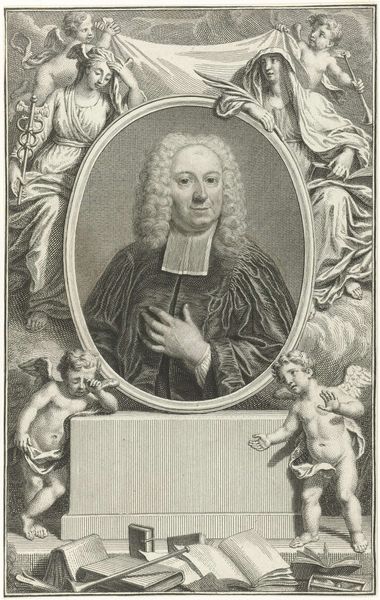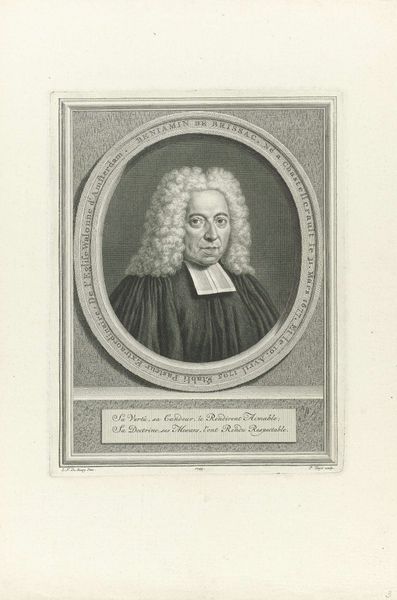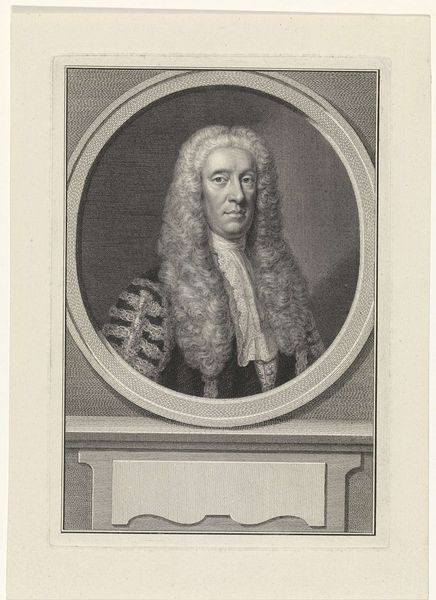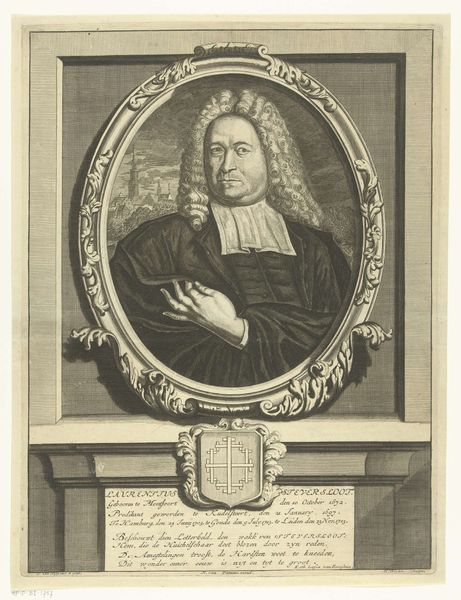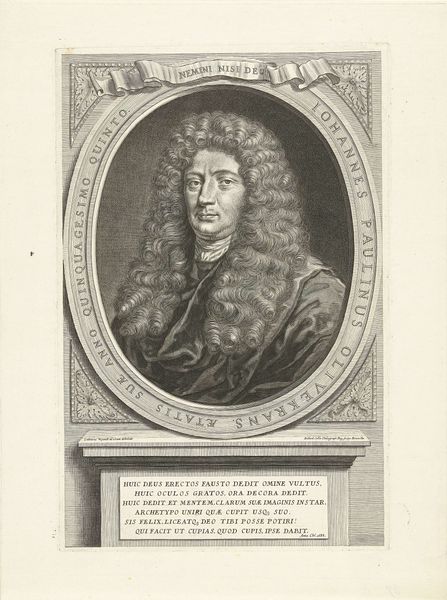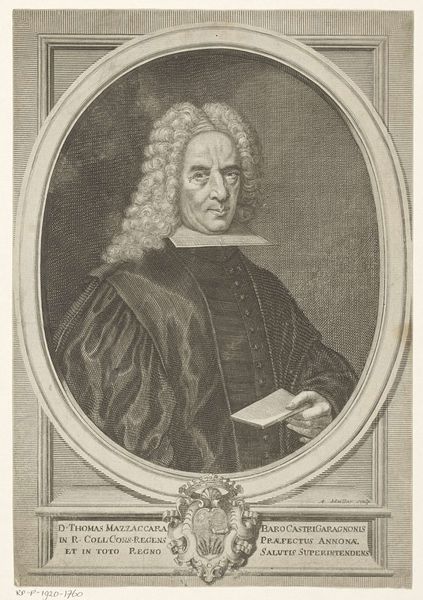
engraving
#
portrait
#
baroque
#
history-painting
#
academic-art
#
engraving
Dimensions: height 344 mm, width 248 mm
Copyright: Rijks Museum: Open Domain
Editor: So, this is "Portret van Johannes van Schelle," an engraving by Jacob Houbraken, created around 1760. It's at the Rijksmuseum. I am struck by how staged it feels. What do you see in this piece? Curator: Beyond a simple likeness, it’s crucial to unpack the layered societal context embedded in this portrait. It reflects the power structures of 18th-century Dutch society. Johannes van Schelle was a prominent theologian; consider how this representation reinforces the existing power dynamic between the church and the populace. Notice how the Baroque style emphasizes grandeur. Editor: So, it's about power? Curator: Partially, yes. The portrait’s formal composition—his confident gaze, the elaborate architectural frame—serves to legitimize and elevate his status. It is history painting with an element of identity, wouldn’t you say? Academic art for a rising leader. What does his clothing communicate to you? Editor: Well, his attire immediately signals religious authority, the gown and the collar. I hadn’t considered how consciously this image constructs his identity and reinforces it for viewers. Curator: Exactly. Now, consider the choice of engraving as a medium. How might that contribute to the portrait’s reach and impact within the social fabric of the time? Think accessibility, dissemination, and lasting legacy. Editor: As an engraving, it could be easily reproduced and shared widely. It transformed him into an accessible symbol. Curator: Precisely. By considering the artwork as a nexus of intersecting social, political, and religious forces, we reveal its enduring relevance for understanding societal dynamics. Editor: I see it. Thank you. It certainly gave me a lot to think about.
Comments
No comments
Be the first to comment and join the conversation on the ultimate creative platform.
